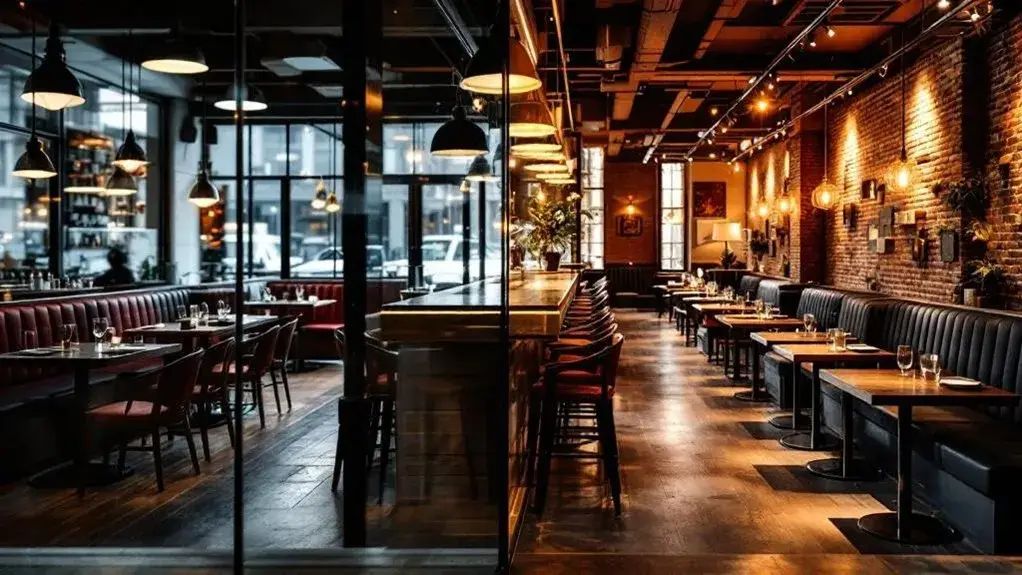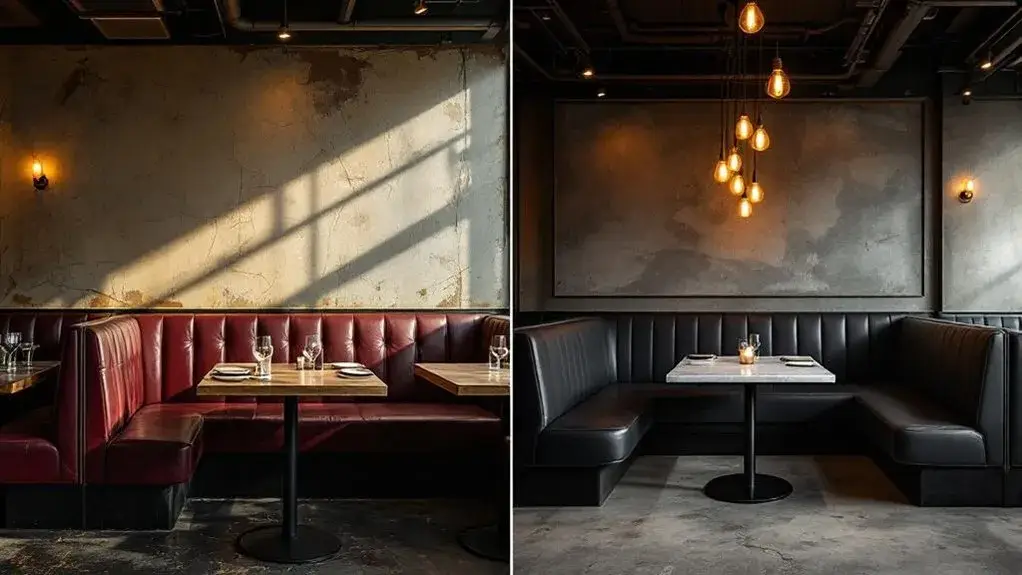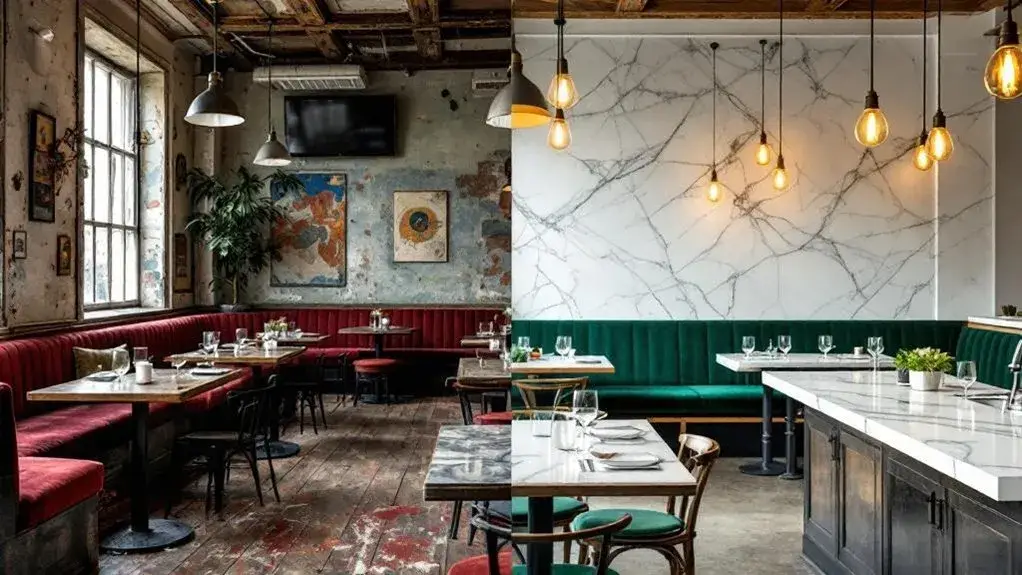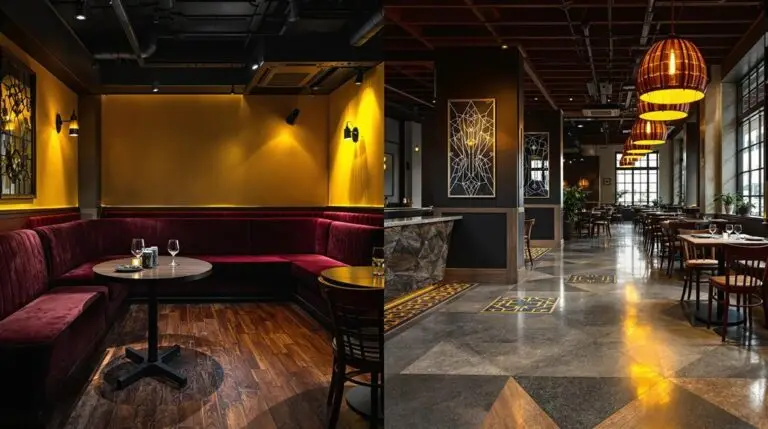The ROI of Restaurant Remodeling: Is It Worth It?
Restaurant renovations typically deliver a return on investment (ROI) between 75% and 150% when done strategically, but it takes 18-24 months to see the full returns. Well-executed remodels boost average ticket prices by 15-25% and increase foot traffic by 20-30% within six months. However, you must factor in the actual costs: permits, equipment upgrades, lost revenue during closure, and a recommended 20% contingency fund. Strategic updates targeting specific problem areas cost 30-50% less than complete overhauls while maximizing your investment impact.
Key Takeaways
- Restaurant remodeling can boost revenue by 15-25% through higher ticket prices and a 20-30% increase in foot traffic.
- Strategic renovations cost 30-50% less than complete overhauls, while still delivering significant improvements in customer experience.
- Actual renovation costs include permits, lost revenue during closure, staff retraining, and a recommended 20% contingency fund.
- ROI depends on targeting specific problem areas that enhance customer experience and operational efficiency first.
- Success requires evaluating financial position, lease terms, market conditions, and customer feedback before committing to renovations.
Calculating the True Cost of Restaurant Renovation

Before you can determine whether a restaurant renovation will pay off, you’ll need to understand that the actual cost extends far beyond the contractor’s initial estimate.
You’re looking at permit fees, equipment upgrades, temporary relocation expenses, and lost revenue during closure.
Don’t forget about design consultations, project management, and potential cost overruns that plague 90% of renovations.
Factor in staff retraining costs for new systems and layouts.
Hidden expenses, such as electrical upgrades, plumbing modifications, and HVAC adjustments, often become apparent during the project.
Create a thorough budget that includes a 20% contingency fund to avoid financial surprises that could derail your investment.
Revenue Impact: How Remodeling Affects Customer Spending
Most restaurant owners underestimate the dramatic impact a well-executed remodel can have on their average check size and customer frequency.
You can typically expect 15-25% increases in average ticket prices after modernizing your space. Fresh interiors encourage customers to linger longer, order appetizers, desserts, and premium beverages they might have previously skipped. Updated lighting and comfortable seating create an atmosphere that justifies higher menu prices.
You’ll also attract new demographics who’ll drive repeat visits. Data shows that remodeled restaurants experience a 20-30% increase in foot traffic within six months.
Your enhanced ambiance transforms dining from necessity to experience, directly impacting revenue per square foot and overall profitability.
When Your Restaurant Actually Needs a Makeover

While your restaurant’s revenue may still appear healthy on paper, subtle warning signs often signal that it’s time for a strategic remodel.
You’ll notice customers taking longer to decide whether to enter, an increase in complaints about outdated fixtures, or a decline in social media check-ins. Your staff might mention competitors’ modern designs, or you’re struggling to attract younger demographics.
Equipment breakdowns become frequent, and your dining room feels cramped despite having the same capacity.
When online reviews consistently mention “dated” or “tired” atmosphere, or when foot traffic drops during peak hours, these aren’t coincidences—they’re clear indicators your space needs revitalization to maintain a competitive edge.
Strategic Remodeling vs. Complete Overhaul: Finding the Sweet Spot
Once you’ve identified the need for change, you’ll face a pivotal decision: how extensive should your renovation be?
Strategic remodeling targets specific problem areas—updating your kitchen equipment, rejuvenating dining room décor, or improving lighting. This approach typically costs 30-50% less than complete overhauls while delivering measurable improvements.
Complete renovations make sense when your concept needs fundamental changes or multiple systems require updates. However, they’re riskier investments with more extended payback periods.
The sweet spot? Prioritize changes that directly impact customer experience and operational efficiency.
Focus on high-visibility areas first, then tackle behind-the-scenes improvements that reduce costs.
Industry Data: Real Numbers From Restaurant Renovation Projects

Restaurant renovation data reveals stark differences in return on investment (ROI) based on project scope and execution.
Kitchen upgrades typically generate returns of 200-300% within 18 months through increased efficiency and capacity.
Dining room refreshes yield an average ROI of 150-200% over two years, driven by higher check averages and increased customer retention.
Complete overhauls yield mixed results, with a 50-400% variance depending on market conditions and execution quality.
Strategic investments, such as lighting, flooring, and furniture replacements, deliver consistent returns of 180-250%.
Technology integrations yield a 120-180% return on investment (ROI) through operational savings.
However, poorly planned renovations often fail to break even, with 30% of projects showing negative returns due to excessive costs or misaligned customer expectations.
Making the Decision: Key Factors to Evaluate Before You Renovate
These industry benchmarks provide a foundation for evaluation; however, your specific situation requires a careful analysis of multiple factors before committing to a renovation.
First, assess your current financial position and available capital. Can you afford the upfront costs without jeopardizing operations?
Next, evaluate your lease terms—don’t invest heavily in a space you might lose.
Consider your local market conditions and competition levels.
Analyze customer feedback and identify specific pain points your renovation would address.
Finally, determine if your concept needs updating or if you’re simply chasing trends.
These factors collectively determine whether renovation makes financial sense for you.
Frequently Asked Questions
How Long Does a Typical Restaurant Remodel Take From Start to Finish?
You’ll typically spend 4-8 weeks on a restaurant remodel from start to finish, depending on your project’s scope.
If you’re doing minor updates like paint and fixtures, you’ll finish in 2-4 weeks.
However, if you’re gutting the kitchen or reconfiguring the dining layout, you’ll need 8-12 weeks or more.
You’ll also need to factor in permit approvals, which can add 2-4 weeks to your timeline before construction even begins.
What Permits and Licenses Are Required for Restaurant Renovation Projects?
You’ll need several permits for your restaurant renovation.
Start with a general building permit from your local building department. If you’re modifying plumbing or electrical systems, you’ll require specialized permits for those trades.
Don’t forget your business license renewal and food service permits if you’re changing kitchen layouts.
Fire department approvals may be necessary for ventilation changes.
Contact your city’s permitting office early—they’ll provide a complete checklist specific to your project’s scope.
Should I Stay Open During Renovation or Close Temporarily?
You’ll need to weigh several factors when deciding whether to stay open during renovation.
If you’re doing minor cosmetic updates, you can remain operational with proper barriers and scheduling work during off-hours.
However, significant structural changes, kitchen overhauls, or extensive electrical work typically require temporary closure for safety and efficiency.
Consider your renovation scope, customer safety, noise levels, and potential revenue loss versus the costs of extended construction timelines.
How Do I Choose the Right Contractor for My Restaurant Remodel?
You’ll want to vet contractors who specialize in restaurant projects, as they are familiar with health codes and the specific requirements of commercial kitchens.
Check their licenses, insurance, and recent references from other restaurant owners.
Get detailed written estimates from at least three contractors, comparing timelines and materials.
Don’t automatically choose the cheapest bid—look for contractors who communicate, meet deadlines, and have experience working around food service operations during construction.
What Design Trends Should I Avoid to Prevent Looking Outdated Quickly?
You should avoid overly trendy color schemes, such as millennial pink or ultraviolet, that’ll feel dated within a few years.
Skip industrial-chic exposed everything, farmhouse shiplap walls, and neon Edison bulb fixtures that are already losing appeal.
Don’t choose Instagram-worthy “living walls” or complex geometric patterns that’ll look tired quickly.
Instead, you’ll want timeless elements like natural wood, classic lighting, and neutral palettes with trendy accents you can easily swap out later.




